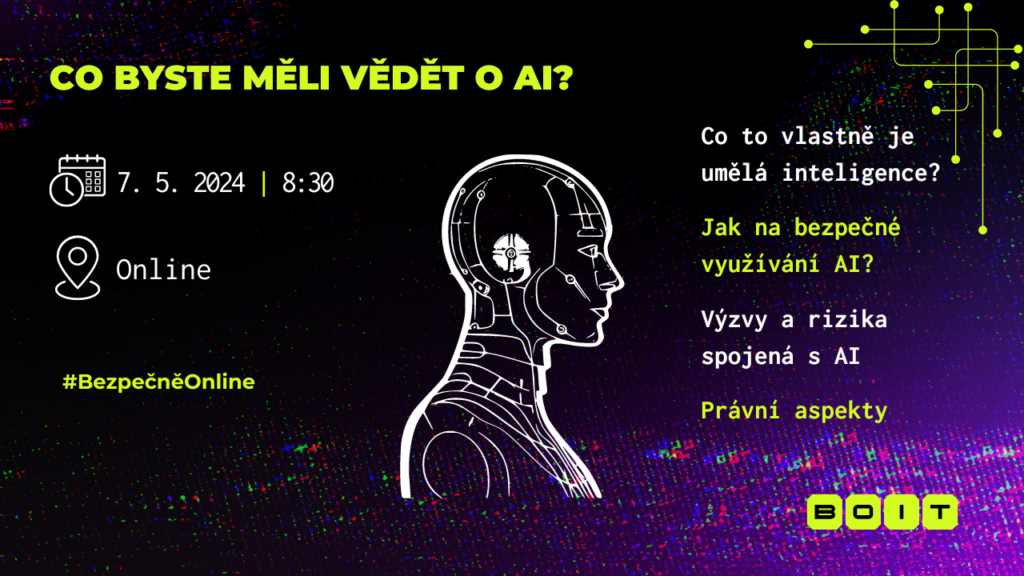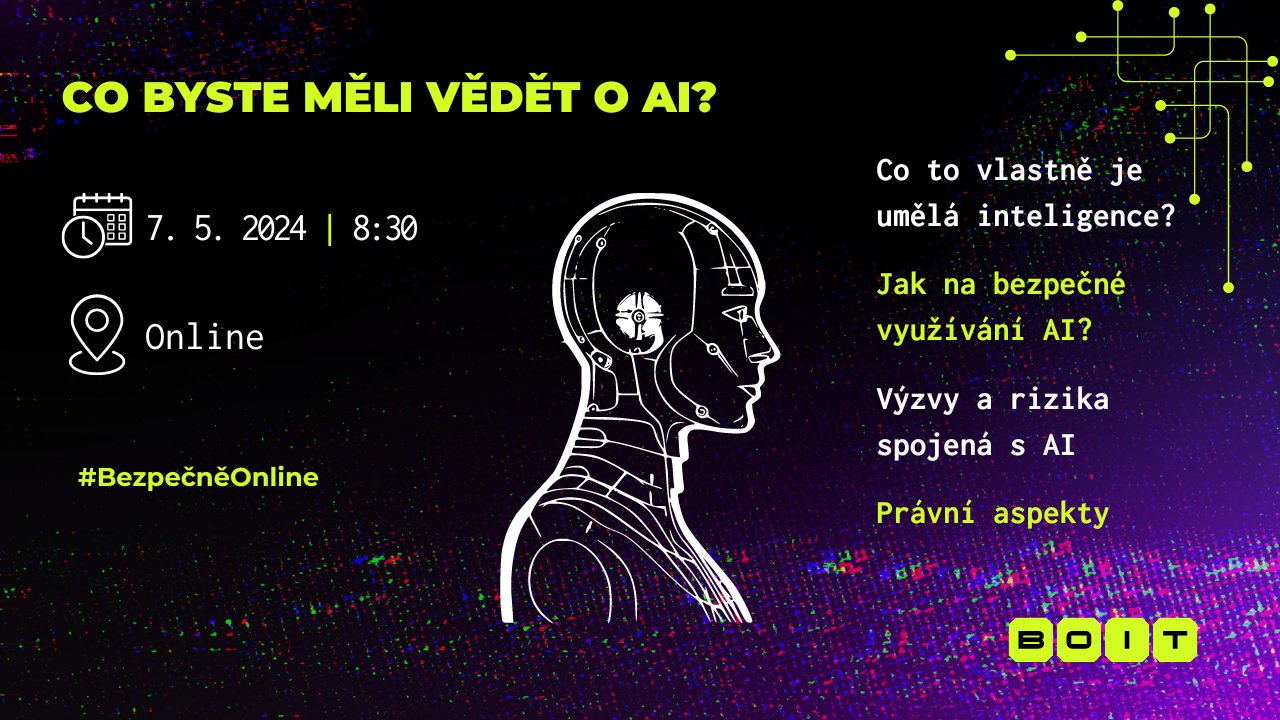What should you know about AI?
In early May, we had breakfast with you at a webinar on “What You Should Know About AI.” Our great colleague Sandra Burdová discussed with the participants what AI actually is, what it can and cannot do and what to watch out for when using it. The recording of the webinar is now fully available to you.
What is AI?
🎓 What does the definition say? Artificial intelligence (AI) is the ability of machines to mimic human abilities such as reasoning, learning, planning or creativity. Artificial intelligence enables technical systems to respond to inputs from their environment, solve problems and achieve certain goals.
In practical terms, we can say that often without knowing it, we all encounter AI almost daily. It is widely used, for example, to deliver personalised advertising, it is also used to optimise product storage, inventory planning, it has a wide range of applications in logistics, it is also used in virtual assistance and, of course, in many, many other industries.
How to use it safely?
🤖 A frequently used tool is the well-known ChatGPT. This tool allows you to chat with an AI and get answers to various questions. You may have even thought of using it to solve a problem within your job. There are a few important things to pause here and realize.
⚠️ As mentioned above, AI has the ability to learn. It learns from what it “experiences,” in this case the data you input and what it stores. So if you want to deal with something that should definitely not be missed, you better think again. After all, the data you enter can be used by the AI at any time for another similar case, and it will pass on your personal or work data to someone else. If you’re not sure what’s safe and what’s not, try our security lectures.
While surveys show that most users approach the use of AI with respect and know that they should use it with caution, it is important to remember that caution is not only needed when using AI frequently, but also when entering data. So personal data, or in the case of work data, confidential data, is definitely not something that should be shared with AI.
And that’s it?
Absolutely not. You should take care to verify the source when using applications that use AI. While this is true for all apps you install, you should be doubly careful here. If you’ve already installed a “smart” app, make sure it has the right permissions – for example, if we install an app that shows us what we’d look like with a different hairstyle, glasses, or even a moustache, we definitely don’t need to give it permission to use our contacts and so on.
What are the risks and challenges of using AI?
Coming back to ChatGPT again, we can’t help but mention that OpenAI makes no secret of the fact that anyone on their team can browse all the communications that take place in the tool at will and, of course, use the data to further learn the tool. So again, basically everything you enter into the platform becomes public information. The same is true, for example, for the popular Midjourney platform.
Artificial intelligence can be described as a great helper if used wisely. Unfortunately, the fact that not everyone who uses AI tools has pure intentions does not contribute greatly to this. All sorts of AI-based tools have become very popular among disinformers, phishers and similar mischief makers. AI helps them create believable texts, it can generate codes, realistically represent events, edit photos – with the right instructions, the lovely AI can serve nefarious purposes. It’s becoming a common and quite dangerous phenomenon called. hallucinations , which are cases where the AI delivers false information in a particularly convincing way. This can, of course, lead to a whole host of unpleasantness.
Scary, isn’t it?
Not to be so negative, let’s also say that AI is currently helping to combat threats. It is able to retroactively identify deepfakes, malicious codes and disinformation that it has unwittingly participated in. There are also already tools that can verify if text has been generated by AI. But let’s reiterate that any information that AI spits out at you should be taken with a grain of salt and verified for its veracity.
What about the law?
AI allows anyone to become an artist, a great writer, in short, to be a creative soul. Except not. The texts that AI creates still need a “human touch” and at least partial editing. Grammar in sentences is often skeletal, some words are not spelled correctly, some expressions are largely unusable. Even so, we often come across AI-generated texts that have not been edited, and the same is true for images. How does the law view such creations? Are they really yours if you gave the right command to create them?
The answer is not quite so clear. You can’t pass off as yours anything you didn’t quite create, can you? However, even the Czech judiciary has been confronted with the question of who is the author of an image that was created by AI. Although this is one single decision of the court of first instance, we can take from it an insight into an issue that is not yet very well anchored in law.
Dispute over AI-created work has already taken place in the Czech Republic
What exactly was that all about? The dispute arose when the defendant posted an image on his website that he obtained from the plaintiff’s website. He created the image using the AI tool DALL-E, using his own prompts. The plaintiff claimed to be the author of the image and therefore sought the removal of his work from the defendant’s website and its further distribution and use. The court thus had to address the definition of copyright and the person of the author.
The basic prerequisite for a work of authorship as defined by the Copyright Act is that it must be a unique result of the author’s creative activity. Here, the court concluded thatthe image created by AI did not meet the definitional characteristics of a work of authorship because it was not the result of the unique creative activity of a natural person. The court also emphasized that nor the verbal assignment for AI, i.e. the so-called. prompt, cannot be considered a work of authorship but as the subject of the work. It also stressed that the subject matter itself is not protected under copyright law. The court therefore did not grant the applicant copyright in the output and dismissed the entire action. The reasoning shows that the plaintiff failed because he was unable to prove, or if you like, his authorship of AI’s output to the court in any way.

